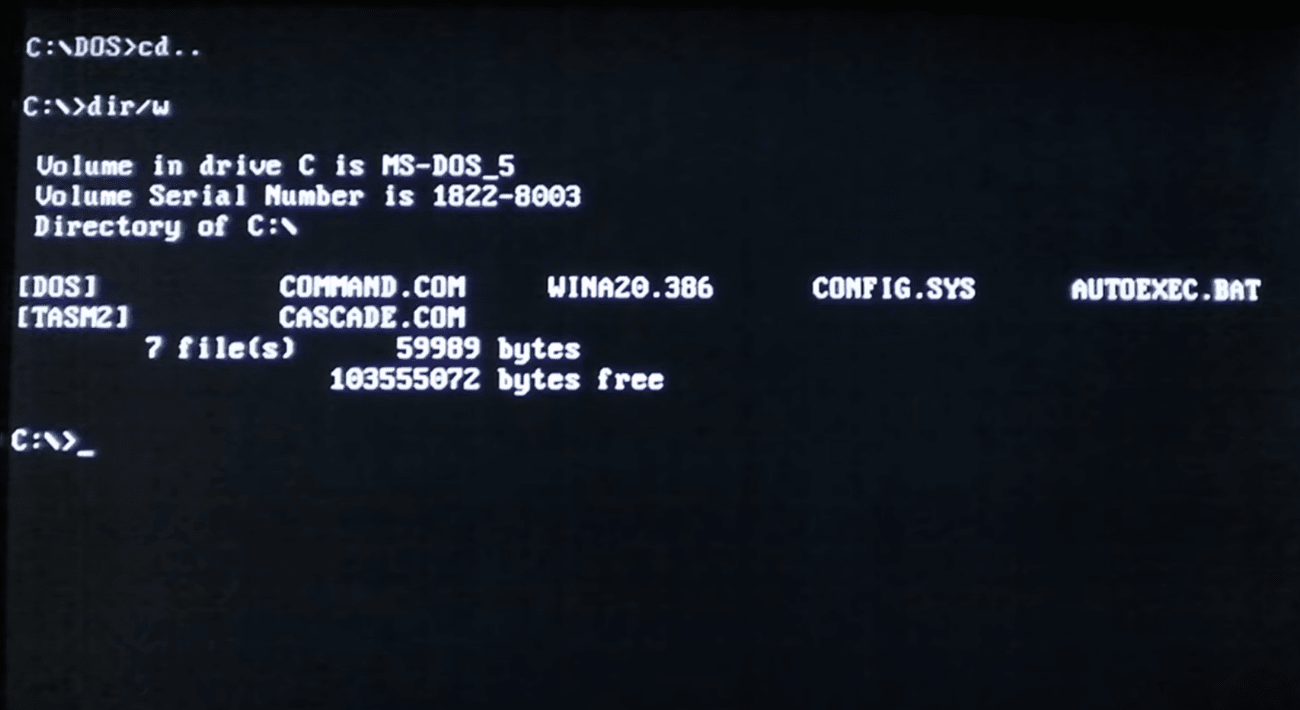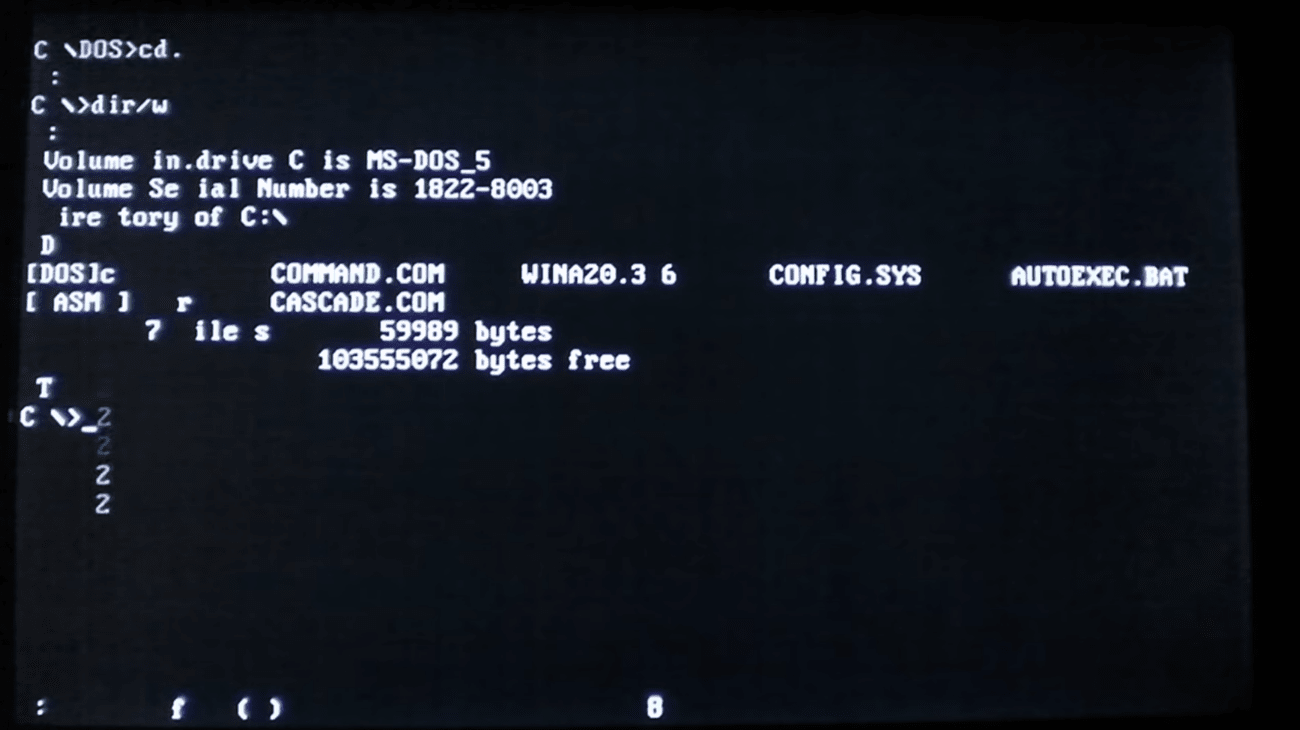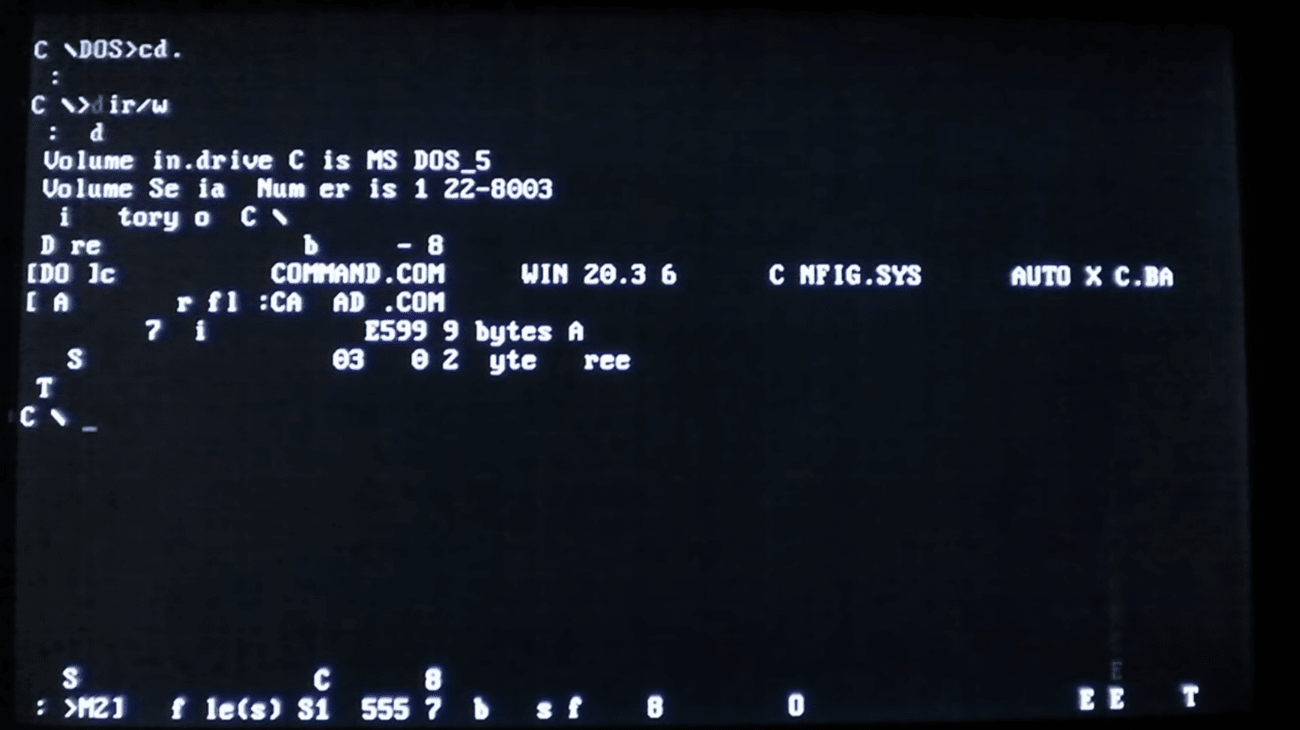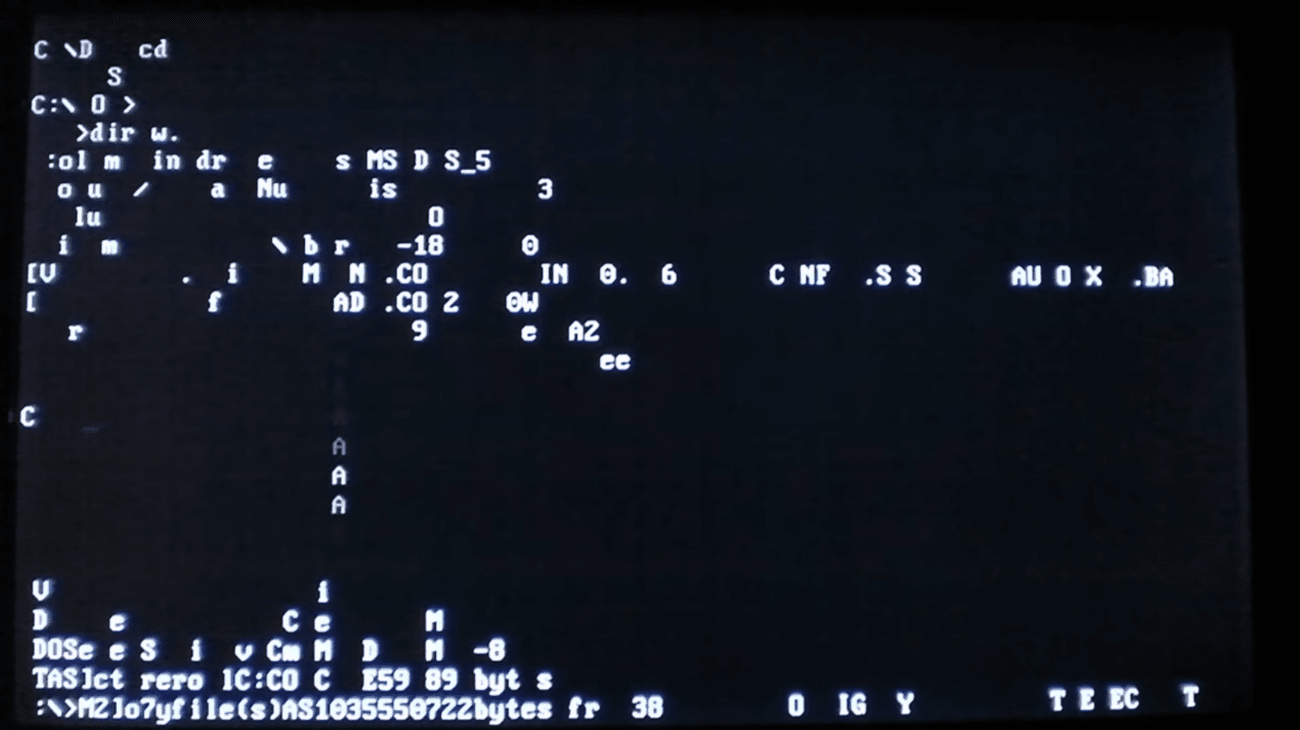The Toxic Brand of NFTs
Jeffrey Alan Scudder walks us through the reasons why people reject NFTs, such as intellectual property theft and energy consumption.


The Cascade computer virus, like the AIDS epidemic, emerged in the 1980s. The virus is programmed to lay dormant in infected programs until a certain time trigger is met. After that, when the program runs in DOS, the computer interface falls apart, almost literally. Individual letters and symbols descend to the bottom of the screen, like drops in a downpour. There is a ticking noise as each one falls, as if the glyph itself is hitting the screen’s lower edge. As the virus continues to run, these glitched pieces of the interface accumulate at the bottom of the screen in a pile of incomprehensible symbols, as if the computer’s interface—in its failure—has become suddenly heavy and susceptible to the effects of gravity.

Legacy Russell’s foundational book Glitch Feminism: A Manifesto (Verso, 2020) makes crucial connections between glitch studies, queer theory, feminist theory, and trans of color critique. In her book, she positions the glitch—a disruptive and deconstructive act within a computational system—as not unlike the moments of breakage enacted in the work, life, political activism, and art practice of queer and trans people of color, including and especially those who are Black and Indigenous. Russell critiques technology itself as inherently biased, embodied, always surveilling, and deeply connected to the embodied existence and control of Blackness, race, and gender and sexuality. She defines the glitch as “an error, a mistake, a failure to function” that causes an instance of system failure, and argues that the glitch breaks not only computational systems but also biopolitical and institutional ones, too.
This is to say that the glitch has many valences. It is not just an unexpected error. The glitch also exists as political tactics and acts that many queer and trans people of color enact day to day in our lived existences and interactions with the state, the government, big data, and the medical and legal systems in which our bodies are held. Russell’s Glitch Feminism exists alongside ongoing movements toward a feminist science and technology studies that center Blackness and race at the core of their critique of closed systems of technology—movements that include the work of Ruha Benjamin, Samantha Blackmon, Simone Browne, Timnit Gebru, Kishonna Gray, Kara Keeling, Katherine McKittrick, Safiya Noble, TreaAndrea M. Russworm and many others.
The glitch has many valences. It is not just an unexpected error.
In a chapter titled “Glitch is Virus,” Russell writes: “What can we learn from a computer virus? A machine transforms into one that cannot perform, that quite literally cannot work, forgets how to work, works against its function. It challenges the endemic correlation between value and labor, dangerous in its uselessness.” I write this essay in 2023, during the Covid pandemic, as these metaphors of the failure of the glitch and the virus endlessly circulate in our popular consciousness. The virus, as Russell writes, transforms closed, expected, and legible computational systems so that they suddenly blossom, opening up to failure and unexpected protocols, grammars, and visualities. The presence of the glitch critiques the normative systems of domination in which it exists—a method that, as Rosa Menkman writes in her “Glitch Studies Manifesto” (2009), pushes against the “layers of obfuscated protocols that find their origin in ideologies, economies, political hierarchies, and social conventions.”
Russell uses the glitch as a framework to critique the idea of the body itself as a constructed metaphor whose very definition only creates more opportunities for control, especially in the lived experience of queer and trans people. “Glitch is anti-body, resisting the body as a coercive social and cultural architecture,” she writes. “We use body to give form to something that is abstract, cosmic.” Russell’s term “anti-body” exists in two formations at once: anti-body as a critique of the body as an assemblage of parts, but also antibody as a singular protein produced in the body that takes down pathogens like viruses and bacteria. This multiplicity of meaning embodies Russell’s technique of thinking at both micro and macro scales simultaneously, in resonance with her citation early in Glitch Feminism of Walt Whitman’s “Song of Myself”: “I am large, I contain multitudes.”
The computer screen is an arbitrary metaphor for order and legibility—an organizing metaphor not unlike the metaphor of the body itself.
The Cascade virus’s effects are documented and archived on YouTube by malware historian danooct1, who, in a video titled “Virus.DOS.Cascade,” allows the virus to run its course several times. He describes the mechanics of the virus and its effects on the user’s labor: after it first activates, “it’ll keep doing it every thirty seconds… computing is impossible while it’s dropping the letters on the screen.” Cascade disrupts the visual grammar of the computer interface in order to signal failure to the user, with the screen taking on a completely different relationship to gravity and motion, no longer following the horizontal order of the command line. Cascade exposes the computer screen as an arbitrary metaphor for order, legibility, logic, labor, and regulation—an organizing metaphor not unlike the metaphor of the body itself.

The computer screen has always functioned as an intermediary, giving us the illusion of control and immediacy through its operating logics. “This is where the problem lies: in the invisibility that becomes seemingly organic,” Russell writes. “This ‘normative ordinary’ is a violence, suggesting a natural order in lieu of a most unnatural system of control.” No computational machine, and no interface, exists in a vacuum. The computer’s interface must be thought of as a text. Likewise, in Russell’s words, “the body is a text: every time we define ourselves, we choose definitions—names—that reduce the ways our bodies can be read.” The interface’s destruction by the Cascade virus reveals the deceptive seamlessness of the normative power systems enmeshed within the visual grammars of computer systems—systems of control that mimic larger institutional systems of power and teach us what it means to be an abiding “citizen” within them.
I write this essay as I sort through my own relationship to virality, trans of color embodiment, and the glitch: what it means to be debilitatingly sick, and what our relationship to time is after significant viral infection. “Machines are expected to work well and work quickly,” Russell writes. “A computer virus triggers the machinic responses of slowness in ways that are unpredictable to the user: endless buffering, crashing, damaging, deleting, reformatting. This slowness shifts time and space, altering a person’s relationship to the machine.” In the same way that Cascade continuously reboots in 30-second increments, and continuously renders the screen illegible and computation impossible, my own body shifted unpredictably during and after Covid. I was hospitalized for several days in 2021, before vaccines were widely available, with Covid pneumonia and what my hospital paperwork calls acute hypoxic respiratory failure. I remember, in bits and pieces, the oxygen machine that roared loudly in my bedroom for over a month, attached to me by long clear hoses that pushed oxygen into my lungs; how I couldn’t stand for long enough to brush my teeth, instead spitting into a bowl my partner held under my chin while I sat in bed; the scissors she used to cut up my food so I could gasp for breath between small closed-mouth bites. For weeks after my hospitalization, I strengthened my lungs by inhaling deeply through a device called an incentive spirometer. Each burning, full breath measured 700 milliliters on the spirometer’s plastic casing; I learned, much later, that my healthy lung capacity is over three and a half times that amount.
I feel, every day, my body in the act of glitching—my own body as the site of the destruction of the body as a metaphor.
My lungs, a previously a seamless system, had suddenly become subject to this “endless buffering, crashing, damaging, deleting, reformatting.” At the time, I couldn’t walk the ten steps to the bathroom without feeling completely suffocated, out of breath, the membrane between my body and the outside world violently jarred. Years later, I still experience echoes of these embodied crashes, glitches, and reboots. As a queer and trans person of color I have always been aware of how my body is not hailed or anticipated by normative time and the spaces I am expected to inhabit, and yet this enduring viral presence reinforces the awareness of my body’s heightened mediation in the world through race, trans identity, disability, and queerness. I feel, every day, my body in the act of glitching—my own body as the site of the destruction of the body as a metaphor. I can feel that edifice break down when I pay close attention to my own labored breathing and heart rate as my body moves through the world. The institutional processes I must engage with daily, that remind me constantly of the ways that my body and existence do not “fit,” are a glitched anomaly that challenges larger systems and structures of labor and power.

The glitch itself is a critique. It de-normalizes institutional systems and structures, making their mediation and their violences more obvious and present to us, as these systems can become so prevalent they feel invisible to people enmeshed within them. Russell argues that being a person of color, being queer, being trans, being Black and Indigenous resonates with the glitch, in that our embodied being challenges the normalized structures of power that exist around us. My experience of Covid compounded my heightened awareness that I am, like many members of my community, vulnerable to the violences of the medical, state, and governmental institutions that fail to protect us. Just as the glitch reveals the invisible workings of a system of power and governance by causing it to fail, we may understand my own falling-apart body as a site of critique that calls into question how “the body,” as an idea, is controlled and composed.
The glitch itself is a critique. It de-normalizes institutional systems and structures.
“We use ‘body,’ to give material form to an idea that has no form, an assemblage that is abstract,” Russell writes. One of the key arguments she makes in Glitch Feminism is that the glitch can be used to trouble the idea of a body, which itself is a metaphor that presents a fictional order and obfuscates its own origins, just like the seamlessness of the computer screen. The body as a concept is ideological and deeply connected to race, Blackness, empire, and domination, Russell argues, produced under historical exploitative conditions of labor, under expectations of institutional control and domination, under the shifting boundaries of what is recognized and legible by governments and institutions. Just as the computer is a metaphor, an assemblage that gives material form to ideology, so is the body.
Russell’s Glitch Feminism offers us a beautiful way to constellate these metaphors of the body, the virus, the computer, and the glitch as tightly connected to queer and trans embodiment and the embodiment of Black and Indigenous people and people of color. Awareness of our bodies and the computational structures they are enmeshed in offers us another option, another way out: a tactic to break, to survive, to resist, and to challenge the laws of gravity that govern us.
Whitney (Whit) Pow is an assistant professor of media, culture, and communication at New York University.
